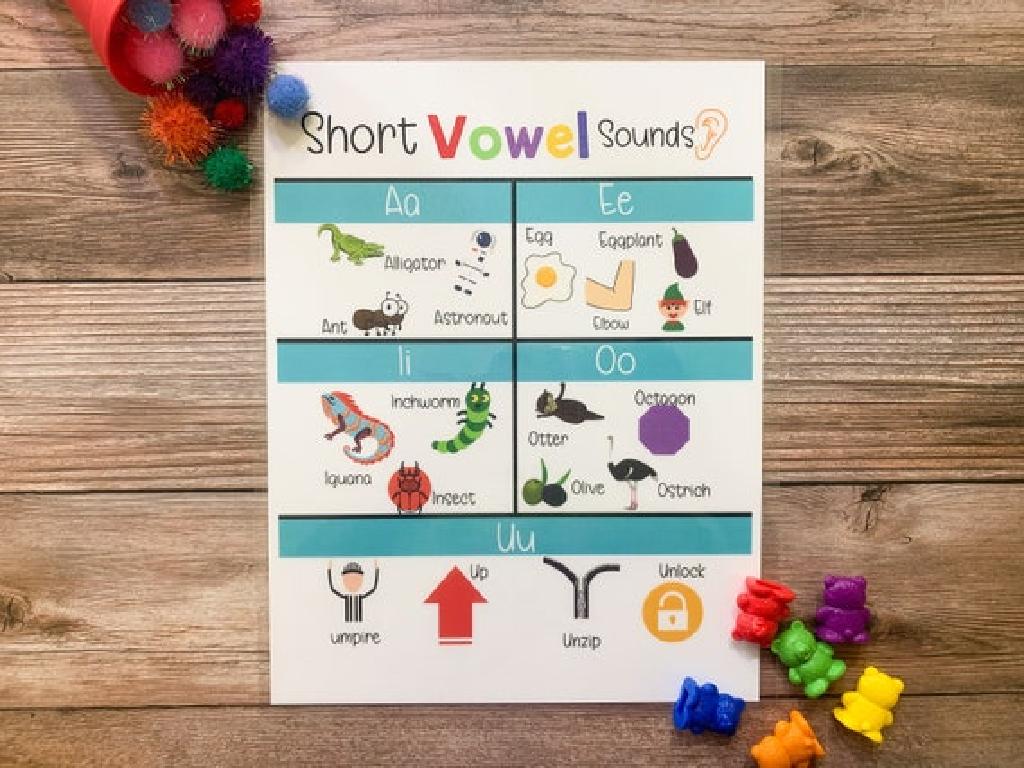Southern Colonies: Economy And Slavery
Subject: Social studies
Grade: Fifth grade
Topic: English Colonies In North America
Please LOG IN to download the presentation. Access is available to registered users only.
View More Content
Exploring the Southern Colonies
– Introduction to Southern Colonies
– The Southern Colonies were Maryland, Virginia, North Carolina, South Carolina, and Georgia.
– Significance in U.S. history
– They played a key role in the development of America’s culture and economy.
– Characteristics of Southern Colonies
– Known for agriculture, plantations, and use of slave labor.
– Overview of economy and slavery
– Economy relied on cash crops like tobacco and cotton; slavery was integral.
|
This slide introduces students to the Southern Colonies and their importance in American history. Emphasize that these colonies were part of the original thirteen and were located in the warmer, fertile regions of the East Coast. Highlight how their agricultural economy, based on plantations and cash crops, led to the reliance on enslaved Africans for labor. Discuss the impact of this system on the social and economic structures of the time. Encourage students to think about how these factors influenced the culture and development of the United States. Provide a map to help students visualize the location of these colonies.
Geography of the Southern Colonies
– Locate Southern colonies on a map
– Explore climate and geography
– Warm climate, fertile soil, long growing seasons
– Link geography to economy
– Geography favored agriculture, leading to plantations
– Discuss impact on slavery
– Large farms led to demand for labor, increasing slavery
|
This slide aims to help students understand the geographical factors that shaped the Southern colonies’ economy and the role of slavery. Start by identifying the Southern colonies on a map to give students a visual understanding of their location. Discuss the warm climate, fertile soil, and long growing seasons that made agriculture especially profitable in these colonies. Explain how the geography favored the development of large plantations, which required a significant labor force, leading to the rise of slavery as an economic system. Encourage students to think about how the land and climate of a place can influence the way people live and work.
Crops of the South: Foundation of the Economy
– Cash crops: tobacco, rice, indigo
– Main crops sold for profit, not just for food
– Agriculture’s role in the South
– Farming was key to wealth and trade in the colonies
– Plantation life’s economic impact
– Large farms relied on enslaved people for work
– The reliance on enslaved labor
– Without enslaved people, plantations couldn’t grow cash crops
|
This slide introduces students to the concept of cash crops, which were crops grown primarily for sale rather than for the farmer’s own use. Tobacco, rice, and indigo were the main cash crops in the Southern colonies. Emphasize the importance of agriculture in the Southern economy, as it was the main source of wealth and trade. Discuss how plantation life was structured around these crops and the significant impact it had on the economy. Highlight the harsh reality that the success of plantations and the Southern economy was heavily dependent on the labor of enslaved people, which is a critical aspect of understanding this period in American history. Encourage students to reflect on how these practices have shaped the region’s history and continue to influence society today.
Economy of the Southern Colonies
– Structure of Southern economy
– Based on agriculture with large plantations and farms
– Trade and export roles
– Exported crops like tobacco and cotton to Europe
– Plantations link to ports
– Rivers and ports were vital for shipping goods
|
The Southern colonies’ economy was heavily reliant on agriculture, with vast plantations growing cash crops such as tobacco and cotton. These plantations required a large labor force, which led to the reliance on slavery. The colonies traded these crops to Europe, making trade and export a crucial part of their economy. Rivers and ports played a key role in this system, as they were the conduits through which the goods were transported to European markets. Understanding this economic structure helps explain the development of the Southern colonies and the rise of slavery as an institution. In class, discuss how geography influenced the economy and the social structure of the Southern colonies.
Introduction to Slavery in the Southern Colonies
– Understanding slavery
– Slavery is forcing people to work without freedom or pay.
– Slavery’s origins in the South
– It started in the 1600s to work on large farms called plantations.
– The Transatlantic Slave Trade
– A trade where Africans were forcibly taken to the Americas to work.
– Impact on colonies and slaves
– It shaped the economy and led to a brutal life for enslaved people.
|
This slide introduces the concept of slavery and its historical context within the Southern colonies. Begin by defining slavery and discussing its characteristics. Explain how slavery began in the Southern colonies, emphasizing the labor needs of plantation agriculture. Introduce the Transatlantic Slave Trade as the forced movement of Africans to the Americas, and discuss its scale and operation. Highlight the profound impact this trade had on the colonies’ economies and the lives of the enslaved people. Use this slide to set the stage for a deeper discussion on the role of slavery in the development of the Southern colonies and its lasting effects on American society.
Life as an Enslaved Person in Southern Colonies
– Daily life on plantations
– Enslaved people worked from sunrise to sunset, often in fields or housework.
– Harsh realities of slavery
– Slavery involved brutal work conditions, punishment, and lack of freedom.
– Acts of resistance
– Enslaved people resisted through work slowdowns, escape, and preserving culture.
– Resilience of the enslaved
– Despite hardships, they maintained hope and strength, forming close-knit communities.
|
This slide aims to provide students with an understanding of the difficult lives of enslaved people on Southern plantations. Emphasize the long, grueling workdays and the severe conditions they endured. Discuss the various forms of resistance, such as subtle acts of defiance and escape attempts, to convey that enslaved people were not passive victims but actively sought their freedom. Highlight their resilience and how they found ways to cope with their reality, preserving their cultural heritage and building strong communities. Encourage empathy and a deeper comprehension of this challenging aspect of American history.
The Impact of Slavery on Southern Society
– Slavery’s role in society
– Slavery was central to the economy and social hierarchy.
– Free vs. enslaved life contrast
– Enslaved people had no freedom, unlike free individuals who had rights.
– Slavery’s enduring legacy
– The effects of slavery continue to influence American society today.
– Understanding historical impacts
|
This slide aims to educate students on the profound effects slavery had on the Southern colonies’ social and economic structures. It’s crucial to convey that slavery was not just a labor system but also a social institution that created a stark divide between the lives of free individuals and enslaved people. Discuss the differences in rights and daily life between these two groups. Highlight how the legacy of slavery has shaped American history and continues to affect society. Encourage students to think critically about the long-term impacts and discuss the importance of understanding this part of history to ensure a more equitable future.
Exploring Colonial Life Through Role-Play
– Form small groups for role-play
– Each group represents a colonial role
– Roles include plantation owner, enslaved person, merchant, etc.
– Act out daily life in the Southern colonies
– Focus on economy and slavery aspects
– Discuss the role-play experience
|
This class activity is designed to help students empathize with different perspectives of Southern colonial life. By role-playing, students can better understand the complex social and economic structures of the time. It’s important to handle the topic sensitively and ensure a respectful and educational environment. Possible activities: one group could simulate a day on the plantation, another could enact a marketplace scene, and another could discuss the implications of slavery. After the role-play, facilitate a discussion to reflect on what they learned about the economy and slavery’s impact on daily life. This will help students grasp the historical context and the human element of this period.
Reflecting on the Southern Colonies
– Recap: Economy & Slavery
– Southern economy relied on agriculture, slaves were a big part of this system.
– Impact on Today’s Society
– The legacy of slavery affects social and racial dynamics today.
– Encourage Curiosity & Discussion
– Express Thoughts & Questions
|
As we conclude our lesson on the Southern colonies, it’s important to review the key aspects of their economy, which was heavily dependent on agriculture and utilized slavery as a labor force. Discuss with students how the history of slavery has shaped the current social and economic landscape of the United States, influencing issues of race and equality. Encourage students to be inquisitive, to think critically about the past, and to understand its relevance to the present. Allow them to express their thoughts and questions freely, fostering an open and respectful classroom dialogue. This reflection will help them to connect historical events to contemporary issues and understand the importance of learning history.






